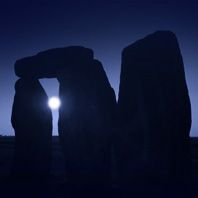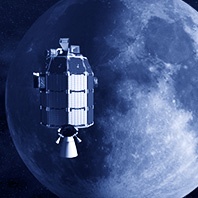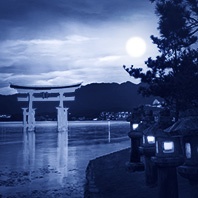Sir Charles Spencer Chaplin (1889–1977) is considered one of the first movie stars ever and made film history with his acting and his works. He is also one of the few artists who managed the transition from silent films to sound films.
Because of using archetypal imagery and symbols in his films, it is natural that the moon could also play a part somewhere. We found four references:
Read more
In China, the September full moon is a special day. It is the day of the Moon Festival or Mid-Autumn Festival. This festival is traditionally celebrated on the 15th day of the eighth month of the old Chinese calendar. Because the moon month averages 29.5 days in length, the 15th day is usually a full moon day, however, there are slight shifts in some years. The Moon Festival is one of the most important festivals in China, but is also held in Korea and Vietnam as well as in the respective districts in big cities around the globe.
Read more
The song »Space Oddity« by the British musician David Bowie (1947–2016) made history. Bowie’s inspiration for this piece composed in 1968, was the science fiction classic »2001: A Space Odyssey« by Stanley Kubrick.
It tells the fictional story of the astronaut Major Tom, who leaves his spacecraft during a flight through space and says his farewell to the people. The last four lines of the lyrics also mention the Moon:
Read more
Everyone is familiar with the silhouette of the Stonehenge rocks in the southern English county of Wiltshire, one of the truly ancient structures of human kind that continues to fascinate because of its archaic construction and mystical presence. Maybe it reminds us people of our origin and of something we often tend to forget amid our hectic everyday world: simplicity.
At the same time, the building of Stonehenge has been everything but easy back then. The age of the grounds is estimated to be more than 5000 years. Experts assume, it took many millions of working hours to dress and transport the up to 50 tons heavy rocks by hand and to erect them in the well-known formation. In particular the lintels, on top of the upright stones, leave us in awe.
Read more
As reported back in September 2013, NASA sent the lunar probe LADEE (short for: Lunar Atmosphere and Dust Environment Explorer) into space, to circle and to explore the Moon. Especially, the formation of ice at the lunar poles has been of great interest. The space probe also collected measurement data of dust particles and gases that are close to the Moon’s surface.
Read more
Who does not know the story of Peter Pan, the boy who does not want to grow up. It is already more than 100 years old (premiered as stage play in London in 1904) and has been adapted to countless screen versions. And next to all the imaginative characters, one encounters repeatedly one thing: the full moon.
Read more
Japan has a custom, which is called “Tsukimi” or also “Otsukimi” that literally means “moon-viewing” (tsuki = jap. Moon). This tradition dates back to the Heian period (794–1192) where Japanese culture and the arts were refined to a high degree. At that time, elements of the Chinese “Mid-Autumn Moon Festival” were introduced in Japan, and festivals and rituals were held in the eighth sun month (which corresponds to September in our current calendar).
Read more
We are tapping again into the treasure chest of Old English stories and have come across the fairy tale »The Buried Moon« or »The Dead Moon«. This piece was published by the Australian historian Joseph Jacobs in 1894, as part of a fairy tale collection, but its origin lies much further back like so many folktales, and has been passed down by word of mouth over the centuries.
Read more
A lot is said about how full moon can or could influence the sleep of people. And like so often, opinions differ on this subject. Some are certain that they sleep poorly or have a restless sleep around the time of full moon and are not able to fall asleep for a long time. Others sleep like a log … in between there are many who are not aware of any of this and not able to determine by their sleep patterns whether it is full moon or not.
Read more
When the sunlight appears on the Moon’s surface in a flat angle, interesting lighting effects are created, due to the mountains and valleys, which can be observed quite well from the Earth. A well-known effect is the so called »golden handle«. This is when the Jura Mountains (»Montes Jura«) are illuminated 4 to 5 days before the full moon and appear as a bright arc, in front of the still darkened Sea of Showers (»Sinus Iridum«) of the Mare Imbrium. This is reinforced by the fact that the boundary of light and shadow, which is called »terminator«, runs directly through this area.
Read more
It is getting quite hot now, as there is indeed a sexual pose, called “full moon”, at least in the German language. This name has not been given in every country. In English it is referred to “reverse cowgirl”. This makes one curious …
In this position, one partner lies on the back (usually the man) and the other partner (usually the woman) sits on top in squat position, but in reverse and turning the back and buttocks towards the person lying underneath.
Read more










